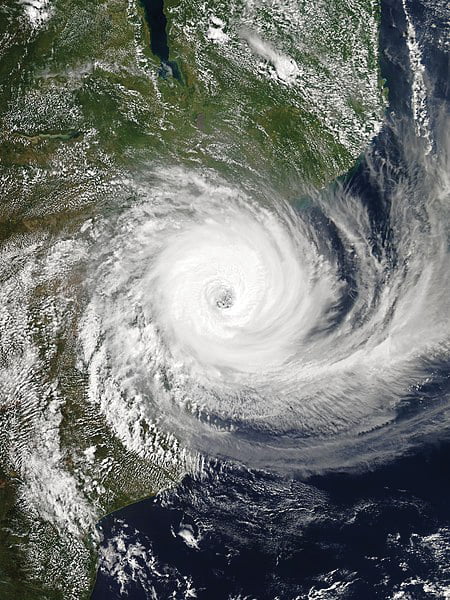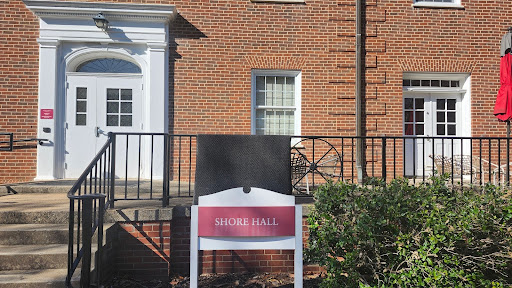Cyclone Idai devastates Mozambique

Satellite images shows the areas affected by Cyclone Idai.//photo courtesy of Wikimedia Commons
The death toll from Cyclone Idai, which made landfall late last week near Beira, Mozambique, is expected to rise well above 1,000, the country’s President Filipe Nyusi announced Monday, March 25.
The storm originated as a tropical depression in early March, but late last week the situation in Southern Africa had begun to sour drastically.
Beginning late Thursday, March 14, the cyclone made landfall and then swept through Mozambique and neighboring countries Zimbabwe and Malawi, causing catastrophic damage.
By Monday morning, the Red Cross had estimated that more than one million citizens across the three countries had been affected and, just as President Nyusi had predicted, warned that the death toll from the disaster is likely to increase as further extent of the storm’s damage becomes apparent.
The International Federation of Red Cross and Red Crescent Societies are still struggling to assist all affected areas nearly two weeks after the storm because of the scope of the destruction. The resulting severed communication lines and destroyed roads have made some communities in the cyclone’s path inaccessible to relief efforts.
The IFRC’s inability to provide support to some of the most heavily affected areas means that more than 100,000 people are still in danger in the aftermath of Idai. Early reports by the IFRC also suggest that up to 90 percent of major cities like Beira, where the cyclone made landfall, have been completely destroyed, and that a majority of Mozambique’s citizens are now without power.
While natural disasters like hurricanes and tropical storms like cyclones often have devastating effects no matter where they make landfall, Cyclone Idai’s effects in Southern Africa have proven to be particularly catastrophic given the Red Cross’ inability to provide immediate and effective relief efforts early in the storm’s aftermath.
In an email interview, Guilford College Geology and Environmental and Sustainability Professor Marlene McCauley offered a suggestion about why the IRFC may be struggling to assist survivors in the immediate aftermath of the disaster.
“Tropical cyclones are basically hurricanes, so you will get the same type of flooding and devastation that we see here with a big hurricane, but with perhaps less ability to provide services quickly after the storm hits.”
McCauley also said a vast majority of the devastation is likely to be “related to flooding from high rainfall.”
Dr. Adrienne Israel, a professor of history at Guilford, noted the severity of the situation in an email interview, suggesting that “[t]his current crisis of extreme hurricane-like wind and rain may be the worst in Mozambique’s modern history with so much of (the country’s) farmland overrun with sea water, which could mean decades before the land is restored for farming and could also mean an even greater loss of life than that caused by the storm, since hospitals were wiped out and there appear to be few signs of a major international relief effort.”
Israel was cautiously optimistic about the situation, however. “Hopefully, neighboring African countries can assist Mozambique even though most of them are also challenged by a marginal level of economic development and fragile infrastructure,” she said.
As time continues to pass in the aftermath of Cyclone Idai, the extent of the damage and devastation is becoming increasingly apparent.
More and more Africans are becoming uprooted and forced from their homes by the day while relief efforts in search of survivors are continuing to report increasingly grim findings.
The story of Cyclone Idai is still developing, though things already appear bleak heading forward for the three countries primarily impacted by this historic disaster.









Ginny Hanson • Apr 1, 2019 at 3:16 pm
Good article. Clear concise and to the point information. I heard about this event , but didn’t have many details. This article offers enough info to realize the people affected need prayers and any help that can be offered. Thank you.